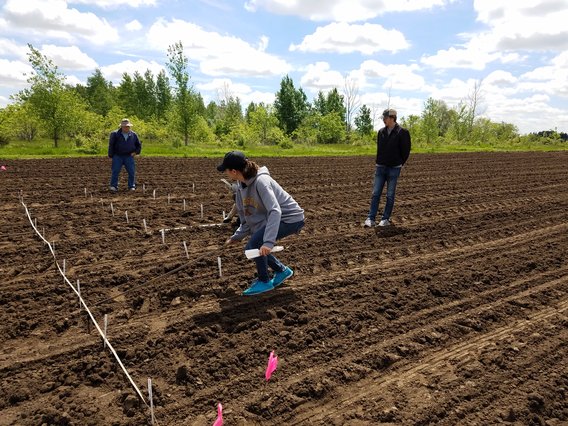
Congratulations to Grace Anderson and Jim Kurle on their recent publication in Crop Protection! This collaborative applied disease management study analyzed the efficacy of several oomicide seed treatments as part of integrated management aimed at preventing Phytophthora sojae stem and root rot on soybean.
Previously, Phytophthora management relied on the use of single-gene resistance or tolerance. However, over time available sources of resistance have become less effective as aggressive new Phytophthora pathotypes developed. The integrated management strategy used in this study found that oomicide seed treatments in combination with either resistance or tolerance were useful in protecting soybean crops from Phytophthora stem and root rot.
In this study, seed of commercial soybean varieties treated with an oomicide was planted in Minnesota, Michigan, and Indiana for comparison. Funding came from the North Central Soybean Research Program, and collaborating universities were Michigan State, Purdue, and the University of Minnesota. Overall project direction came from Austin McCoy, then a graduate student at Michigan State University. Anderson calls McCoy a “super-collaborator,” citing his organizational skills and knack for teamwork as keys to the project’s success.
Kurle and Anderson conducted Minnesota’s study at the Rosemount Research Center, with help from a group of excellent student workers. Kimon Karelis of the Rosemount Research Center was a valuable collaborator; bringing knowledge of field sites and diseases that were key to setting up the trial in an area where Phytophthora had been a problem. Conditions for disease were enhanced with inoculum carefully made from infected red sorghum, an early planting date, regular irrigation and abundant rainfall. Together, this created a quality study with uniform Phytophthora infection.
Phytophthora is a soilborne disease, and having trial sites in different regions of the Midwest provided important information about the effect of soil composition and weather on the outcome of the experiment. For example, while the clay content of Minnesota’s soils is conducive to Phytophthora, the Minnesota results were less dramatic than those observed in Michigan.
Kurle emphasizes the applied nature of the study and its immediate use to farmers. Overall, the results of the study indicated that oomicide seed treatments can mitigate early season loss of stand due to Phytophtora sojae, but that an integrated approach combining varieties with high tolerance or an effective resistance gene, and oomicide seed treatment will provide the most effective control of Phytophthora throughout the growing season.
